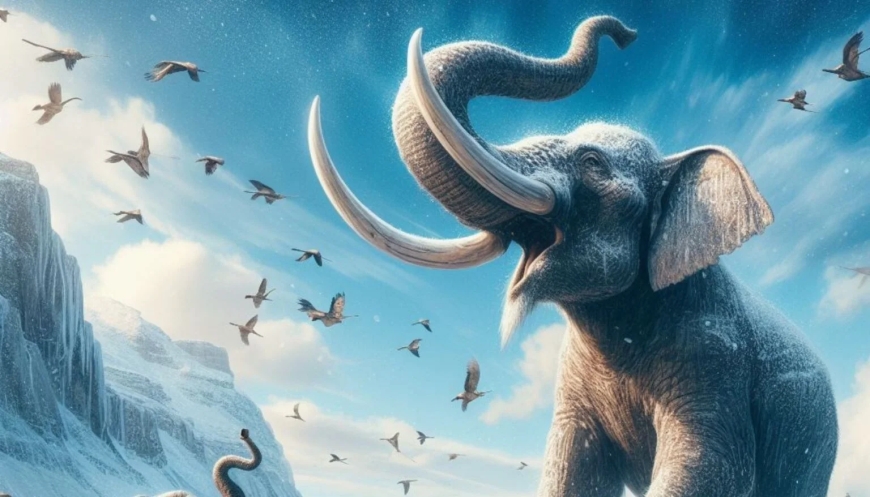How Do Modern Elephants Compare to Their Ice Age Ancestors?

In the vast expanse of Earth’s history, few creatures captivate our imagination quite like the mighty elephants. As symbols of wisdom, strength, and memory, they have fascinated humans for centuries. But how do the elephants we see today measure up against their formidable Ice Age ancestors? This question leads us into an enthralling journey through time and evolution. In this exploration, we delve deep into the comparison of modern elephants and their Ice Age predecessors, examining the marvels of adaptation and the secrets they reveal about survival in changing worlds.
Physical Attributes: Size and Structure
When considering physical attributes, the differences and similarities between modern elephants and their Ice Age ancestors, such as the mammoth, are striking. The most notable difference lies in size. The Woolly Mammoth, for instance, was considerably larger than today’s African elephants, which are the biggest of the current species.
- Size: Woolly Mammoths could reach up to 11 feet at the shoulder, whereas the largest African elephants today stand at around 13 feet, but typically average closer to 10 feet.
- Body Structure: Ice Age mammoths had a more robust body structure, with shorter legs and a humped back, adaptations likely developed for surviving in the harsh glacial environments.
- Fur: A significant difference is the presence of thick fur in mammoths, providing insulation against the cold climates of the Ice Age.
Despite these differences, modern elephants and their ancestors share many similarities. The trunk, tusks, and general body shape remain largely unchanged, testifying to the efficiency of this design in various environments.
Diet and Feeding Habits
The diet of an elephant tells a story about its environment and lifestyle. The Ice Age presented a very different landscape, impacting the feeding habits of mammoths and mastodons.
- Diet Composition: Woolly Mammoths, adapted to cold environments, fed primarily on low-growing tundra vegetation, unlike the diverse diet of grasses, fruits, and leaves consumed by modern elephants.
- Foraging Strategies: Ice Age elephants had to adapt their foraging strategies to cope with the limited and seasonally variable food supply.
Modern elephants have a more varied diet, reflecting the diverse ecosystems they inhabit, from savannas to forests. This versatility in feeding habits has been a key factor in their survival and adaptability.
Behavioral Adaptations
Behavior is a window into an animal’s world, and the behavioral adaptations of elephants offer insights into how they have survived through the ages.
- Social Structure: Both modern elephants and their Ice Age ancestors are known to have had complex social structures. Evidence suggests that, like modern elephants, mammoths also lived in matriarchal herds.
- Migratory Patterns: The migratory patterns of Ice Age elephants were heavily influenced by the glacial cycles, whereas modern elephants migrate based on seasonal changes and the availability of resources.
The enduring social structures and adaptable behaviors of elephants demonstrate an extraordinary ability to cope with environmental changes, a trait that has served their species across millennia.
Genetic and Evolutionary Insights
Understanding the genetic and evolutionary journey of elephants illuminates how they have adapted over time. Modern scientific techniques have allowed us to compare the DNA of extinct mammoths with that of living elephants, revealing fascinating connections and differences.
- Genetic Adaptations: Genetic studies show that mammoths had specific adaptations to cold weather, such as genes related to fat metabolism and hair growth.
- Evolutionary Path: The evolutionary path from mammoths to modern elephants showcases a series of adaptations to changing climates and habitats.
These genetic insights not only help us understand the past but also assist in the conservation efforts of current elephant species, as they face new challenges in the modern world.
Conservation and Future Prospects
Lastly, understanding our majestic pachyderms’ past can offer crucial insights into their future. The conservation of modern elephants faces challenges vastly different from those of their Ice Age ancestors, primarily due to human activity.
- Habitat Loss: The most significant threat to modern elephants is habitat loss, a problem that was nonexistent for their Ice Age counterparts.
- Climate Change: Modern elephants are also facing challenges due to climate change, impacting their natural habitats and food sources, a scenario somewhat reminiscent of the environmental shifts their ancestors faced.
- Human Conflict: Unlike their ancestors, modern elephants often come into conflict with humans, due to habitat encroachment and poaching.
The future of modern elephants heavily relies on effective conservation strategies that take into account not only their current needs but also the lessons learned from their ancestral past. Efforts in habitat conservation, anti-poaching laws, and creating human-elephant conflict mitigation strategies are crucial.
Through the lens of history, modern elephants stand as a testament to the resilience and adaptability of life on Earth. The comparison with their Ice Age ancestors not only reveals the remarkable journey of these majestic creatures but also highlights the interconnectedness of all life and the importance of understanding our past to protect our future. As we look at modern elephants, we see not just a remnant of a bygone era but a living bridge to our planet’s rich and diverse history, reminding us of the continuous thread of life that weaves through time and species.
What's Your Reaction?






































